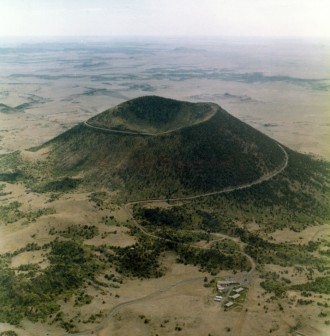The Young Scientist: Our Earth
The Young Scientist: Our Earth
April 2, 2025By AILEEN O'CATHERINE

The Earth is not one of the solar system’s larger planets, but it is the densest. Third planet from the sun, our home in space is the solar system’s fifth largest and, as far as we know, the only planet inhabited by living things. It is also the only planet in our system with liquid water on the surface. With a diameter at the equator of about 12,756 kilometers (km), or 7,926 miles, Earth is the largest of the four inner, terrestrial planets. The other terrestrials in our solar system — Mercury, Venus and Mars — are, like Earth, made up of rock and metal.
Earth roughly resembles a boiled egg in the way it is made up of layers: crust, mantle and core. The outermost layer, like the shell of an egg, is thin and rigid compared to the other two layers. The crust varies in depth from 5 km (3 miles) to 100 km (62 miles, about the distance between Albuquerque and Santa Fe). The continental crust, below land, is made mostly of granite. The oceanic crust lies beneath oceans and is made mostly of basalt.
The mantle is hot, dense and made of semi-solid rock. This second layer is about 2,900 km (1,802 miles) thick and can be thought of as the white of a boiled egg. Although this layer has more iron, magnesium and calcium than the crust, temperatures are higher at this level because of the intense pressures that increase with depth.
Even deeper within the Earth is the core, which can be thought of as the yellow, or yolk, of a boiled egg. The liquid outer core is about 2,200 km thick (1,367 miles) and made up of iron, nickel, sulfur and oxygen. The solid inner core is about 1,250 km thick (777 miles). This innermost core is made of iron and nickel and stays solid because of the intense pressure around it. This inner core is about as hot as the sun.
The crust is brittle and can break, which happens during earthquakes. Earthquakes are the result of movements within the Earth’s crust, or of volcanic action. New Mexico is home to many volcanoes, though none are active. Well-known extinct New Mexico volcanoes include the Albuquerque volcanoes, the Jemez Mountains, Mount Taylor and Capulin Volcano.
The Raton-Clayton Volcanic Field is a large volcanic field in northeastern New Mexico. At nearly 20,720 square km (8,000 square miles), it is known for its large size, young age and the easily accessed Capulin Volcano. Capulin Peak is an extinct cinder cone volcano that last erupted 56,000 to 62,000 years ago. The name “cinder cone” comes from the type of materials the volcano is made of — cinders, the small fragments of lava that were ejected into the air during volcanic eruptions. Lava flow areas can still be seen. If you have ever wanted to walk inside a volcano, visit Capulin Volcano National Monument and step into the geologic past. A paved road leads to the summit of the crater and rim trails go to the crater bottom. From the crater rim, it is possible to see northeastern New Mexico as well as parts of Texas, Oklahoma and Colorado.




